Did you know that over 40% of motorcycle owners skip essential winter storage steps—yet ignoring these can lead to costly spring repairs?
If you love your ride, putting your bike away for the winter months is about more than just tossing a cover over it. This comprehensive guide dives deep into the top tips for storing a motorcycle in cold weather , so you can avoid flat spots, stale fuel, and corroded parts. Whether you store your motorcycle at home or use a dedicated storage unit, these strategies will keep your motorcycle in mint condition until the riding season returns. Read on to learn insider-approved steps that make winter storage not just safe, but smart!
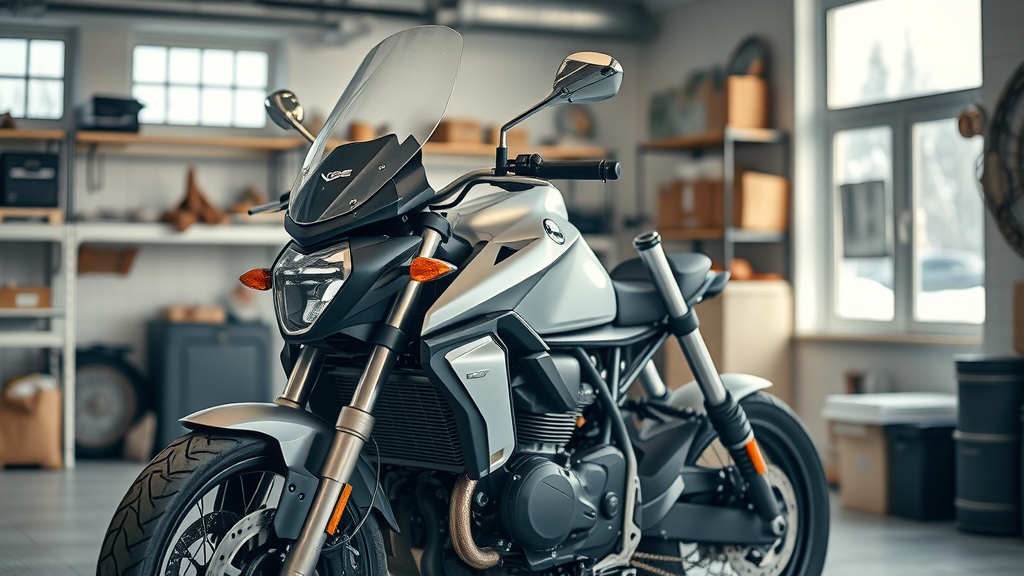
Did You Know? Over 40% of Motorcycle Owners Skip Essential Winter Storage Steps—Here’s Why That’s Risky
Many riders think just parking their motorcycle for winter is enough, yet surveys reveal that over 40% neglect vital steps that will preserve their bike’s value and reliability. Skipping proper winter storage exposes motorcycles to moisture, freezing temperatures, and electrical issues that cause damage far beyond cosmetic concerns. For instance, failing to stabilize the gas tank or maintain the battery can lead to expensive repairs, ruined fuel systems, and even safety hazards when temperatures drop.
The risk amplifies during extended periods of non-use—pitting metal components, developing flat spots on tires, or allowing rodents to nest inside exhaust pipes and air intakes. Understanding and acting on these potential pitfalls is crucial if you want your ride to start up effortlessly once spring arrives.
Why Proper Winter Storage Matters for Your Motorcycle
When storing your motorcycle for winter, what’s at stake isn’t just a clean bike—it’s its long-term performance and market value. Inadequate protection against freezing temperatures, humidity, and stagnant conditions can internally corrode your fuel system, drain your battery, and deteriorate mechanical components.
Moreover, winter months create environments ripe for rust, stuck brakes, and oil settling . Exposure to even minor condensation can calcify brake lines or lead to a degraded gas tank, all of which shorten a motorcycle’s lifespan and result in preventable repairs. Storing your motorcycle correctly safeguards your investment and gives you peace of mind until the riding season reopens.
What You’ll Learn About Top Tips for Storing a Motorcycle in Cold Weather
-
How to protect your motorcycle for winter and the winter months
-
Step-by-step winter storage best practices
-
Common mistakes in motorcycle winter storage
-
Expert recommendations for using storage units or home storage
Understanding the Risks: Motorcycle Winter Storage Essentials
The Dangers Cold Weather Poses to Motorcycle Components
Winter riding might be exhilarating, but prolonged storage during freezing temperatures poses unique dangers to your bike's essential systems. Metal parts can contract and expand with cold snaps, leading to stress fractures and seal leaks. Batteries often lose charge quickly in cold, risking sulfation that kills their cranking power.
Additionally, moisture from temperature fluctuations can creep into the fuel system, promoting fuel breakdown and corrosion in your gas tank. Even minor exposures may create internal condensation, especially if the gas tank isn’t full or treated with a fuel stabilizer. Meanwhile, neglecting lubrication will leave moving parts vulnerable to rust and seizing, jeopardizing the motorcycle's overall reliability for the next riding season.
Consequences of Neglected Motorcycle Winter Storage
Shortcutting motorcycle winter storage essentials sets the stage for spring headaches. A battery left unattended may not hold a charge or, worse, leak acid, damaging wiring and electronics. Tires stored unprotected on a hard surface during the colder months can develop flat spots—making for a bumpy, unsafe first ride back.
Other risks include rodents or pests entering through open exhaust pipes or air intakes, chewing wiring, and turning your beloved ride into the world's fanciest nest. Even minor moisture can lead to internal rust, clogged jets, and a stuttering start to your riding season. Ultimately, proper winter storage is the single best insurance policy you can have for your motorcycle’s longevity and performance.
"Ignoring proper motorcycle winter storage can lead to costly repairs in the spring—take steps now to protect your investment."
Preparing Your Motorcycle for Winter Storage: Step-by-Step Top Tips
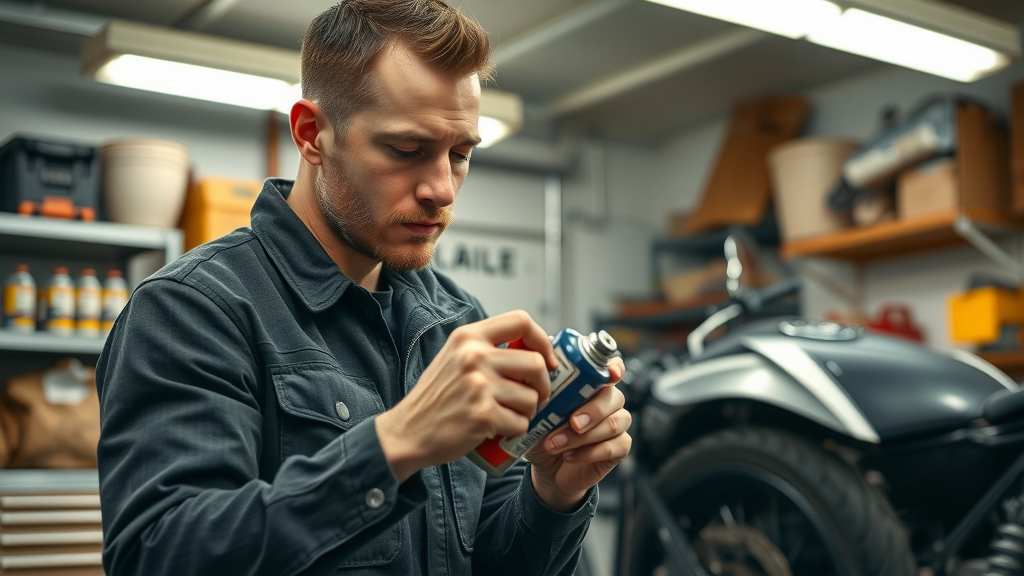
-
Clean and Dry Your Motorcycle Thoroughly: Remove dirt, grime, and road salt to prevent corrosion, then dry completely to avoid moisture issues.
-
Inspect and Lube Moving Parts: Give the chain, controls, cables, and exposed bolts a generous, even coat of lubricant to block moisture and keep everything moving freely after winter storage.
-
Fill the Gas Tank and Add Fuel Stabilizer: A full gas tank prevents rust from internal condensation, while a fuel stabilizer guards against breakdown and varnish formation in the fuel system.
-
Address the Battery—Remove or Maintain: Either remove the battery and keep it on a trickle charger/battery tender, or maintain it in the bike with a maintenance charger connected.
-
Protect the Tires from Flat Spots: Inflate tires to proper pressure and, if possible, use a motorcycle stand or wheel chocks to keep them off cold concrete, preventing them from developing flat spots.
-
Cover All Openings (Exhaust Pipe, Air Intake): Use a clean rag or plastic bag in the exhaust pipe and air intake to keep pests out and humidity from entering.
-
Elevate with a Motorcycle Stand: A motorcycle stand not only safeguards your tires but also relieves suspension components from prolonged pressure during storage.
-
Store Your Motorcycle in a Safe Location or Storage Unit: Choose a temperature-stable, dry area—preferably locked and away from the elements.
Why a Clean Motorcycle for Winter Matters
Keeping your motorcycle for winter spotless isn’t just about aesthetics; neglecting this step exposes your bike to hidden harm. Road grime, water spots, and salt residues are notorious for trapping moisture against painted surfaces and metalwork, allowing rust to take root and accelerating corrosion.
By thoroughly cleaning and drying your motorcycle before storage—especially under fenders and near the chain—you create a barrier against damaging winter elements. A detailed clean also helps you spot problems early, like slow oil leaks, cracked hoses, or worn hardware, allowing you to address issues before the bike sits dormant for months. The result: your motorcycle emerges from storage ready, with no surprises or hidden repairs needed.
Choosing the Right Storage Location: Home vs. Storage Unit for Winter Months
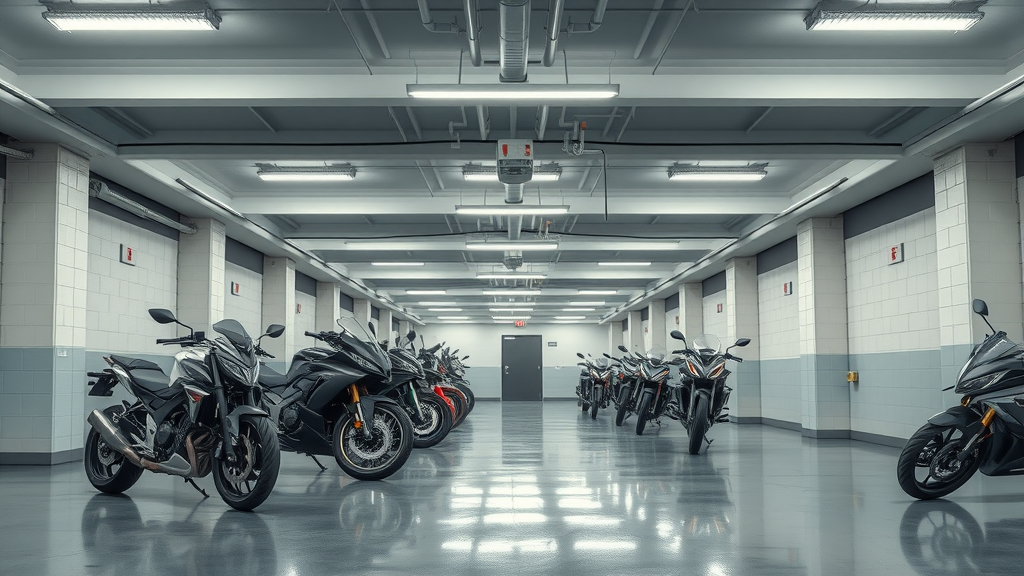
Advantages of Using a Dedicated Storage Unit for Motorcycle Winter Storage
A quality storage unit offers significant advantages for motorcycle winter storage compared to home garages. Many storage facilities provide climate-controlled environments that reduce the chances of freezing temperatures, damp air, and damaging condensation. Most also boost security with cameras, locked gates, and regular staff patrols—essential for peace of mind if you travel during winter months.
Renting a storage unit allows you to free up valuable home garage space, so your bike is protected from accidental bumps or drops. Well-lit, dedicated spaces make it easier to access and maintain your motorcycle during storage, especially for off-season checkups, battery charges, or supply top-offs. Ultimately, a motorcycle storage facility delivers consistent protection, maximized security, and added convenience for year-round enthusiasts.
How to Prepare Your Garage for Motorcycle Winter Storage
If using your home garage for winter storage, prepping it is key to avoiding cold-weather damage. Start by thoroughly sweeping out dust and debris that can attract moisture or pests. Aim to park your motorcycle on a piece of carpet, thick mat, or a wood board to buffer your tires from direct contact with the cold concrete—protecting against flat spots.
Consider investing in a small, portable dehumidifier to keep condensation at bay, especially if your region experiences frequent freezes and thaws. Double-check that your garage doors and windows seal tightly; drafts can invite both rodents and dust into vulnerable bike components. If possible, position the bike away from exterior doors where the coldest drafts hit and always use a quality motorcycle cover, even when parked indoors, to guard against dust and accidental knocks.
|
|
|
Comparison of Storage Options for Motorcycle Winter Storage: Home Garage vs. Storage Unit |
|
Feature |
Home Garage |
Storage Unit |
|---|---|---|
|
Security |
Varies; depends on locks and household access |
High; dedicated locks, surveillance, access controls |
|
Temperature |
Can fluctuate; unheated in winter |
Often climate controlled, consistent |
|
Space |
May be limited due to other storage needs |
Dedicated, usually more space for maintenance tasks |
|
Cost |
Free after home purchase |
Monthly rental cost |
|
Convenience |
Immediate access, easy upkeep |
May require travel; but often more organized |
Motorcycle Winter Storage: Tire Protection Tips—How to Prevent Flat Spots
Using a Motorcycle Stand for Long-Term Storage
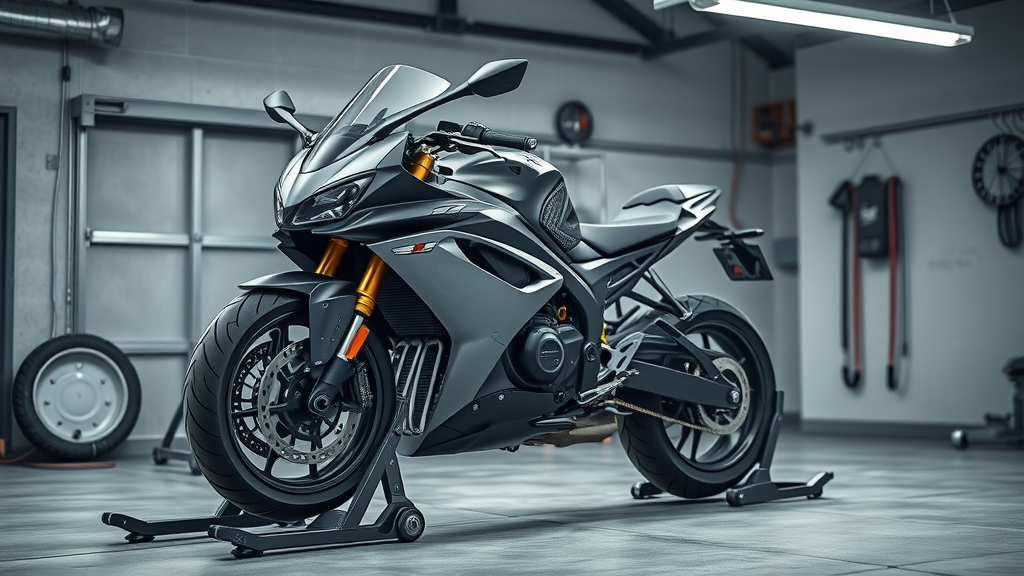
One of the most critical winter storage tips is preventing your motorcycle’s tires from developing flat spots. When a bike sits in the same position for an extended period—especially on cold concrete—its tires can become misshapen, leading to unsafe rides and costly replacements. Using a motorcycle stand (either front, rear, or both) takes the bike’s weight off the tires, alleviating pressure on single contact points.
If stands aren’t available, at minimum, roll your bike forward or backward every few weeks to vary the contact patch, and ensure the tires are inflated to the recommended PSI. For extra protection, place a piece of thick carpet, foam, or laminated wood beneath each tire. Even a small step here can help prevent flat spots and extend the life of your tires during the winter months.
Top Fuel System Recommendations for Storing Your Motorcycle
Why Use Fuel Stabilizer in Your Gas Tank?
If you’re preparing your motorcycle for winter , it’s vital to use a quality fuel stabilizer . Modern gasoline degrades in as little as a few weeks, especially with ethanol additions that pull moisture from the air.
Fuel separation and breakdown result in sticky deposits that clog carbs or injectors, making for rough idles, poor starts, and a costly trip to the mechanic when riding season resumes. Adding a fuel stabilizer to a full gas tank prevents fuel system corrosion and protects against both condensation and varnish—two notorious enemies of motorcycle performance during the winter months.
Steps for Preparing the Gas Tank and Fuel System for Winter Storage

To ensure your motorcycle’s fuel system stays healthy, start by filling the gas tank completely. This reduces the chance of condensation forming inside, which can rust the tank and contaminate the gas. Pour in the recommended amount of fuel stabilizer (read your product’s label for specific ratios), then run the engine for several minutes. This draws treated fuel through the injectors or carburetor and ensures every part of the fuel system is protected during winter storage.
Turn off the bike, and double-check for leaks or strong gasoline smells—these can indicate gasket issues needing attention before storage. For motorcycles with petcocks, switch to the “off” position after running the stabilizer through the system. If appropriate, make sure the gas cap is closed tightly to prevent evaporation or further moisture intrusion. These practices are the gold standard for avoiding common headaches when bringing a bike out of hibernation.
Battery Care for Motorcycle Winter Storage
Should You Remove or Maintain the Motorcycle Battery Over Winter?
Your battery is among the most vulnerable components during freezing temperatures. The best practice is to remove the battery and keep it on a battery tender or trickle charger in a climate-controlled area. This battery storage step prevents the charge from dropping below safe levels and eliminates the risk of internal freezing or terminal corrosion.
If you prefer to leave the battery in the bike, connect it to a quality, waterproof trickle charger—but check on it every few weeks to catch signs of sulfation or leakage. Whichever method you choose, avoid placing the battery directly on garage floors; set it atop wood or cardboard to avoid unnecessary cold transfer, which can shorten its lifespan. Remember, a cared-for battery ensures your motorcycle will be ready for spring’s first ride without hesitation or hassle.
Protecting the Exhaust Pipe and Other Vulnerable Areas in Cold Weather
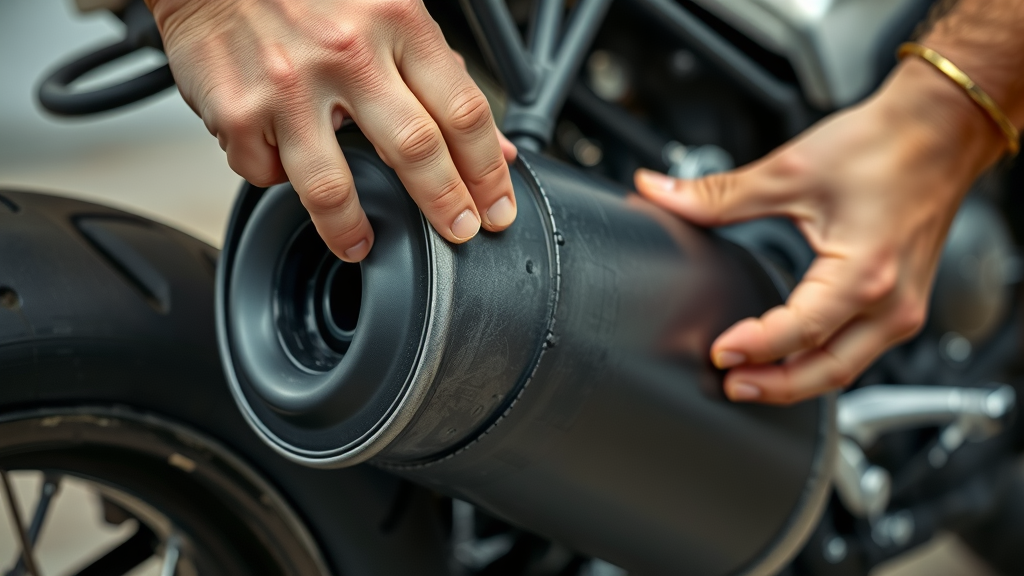
Covering the Exhaust Pipe and Air Intake for Motorcycle Winter Storage
Neglecting your exhaust pipe and air intake can invite costly trouble during an extended period of winter storage. Rodents and insects seek warmth and shelter, seeing your bike’s open exhaust as an ideal home. To prevent this, plug each exhaust pipe securely with a clean, dry rag or a plastic bag, ensuring it doesn’t get pushed in too far. For extra peace of mind, use tape or a specialty exhaust cover to keep it firmly in place.
Apply similar protection to the air intake—either covering it with a breathable piece of fabric or a purpose-made cover. Ensure any material used is moisture-free, as trapped dampness can wind up corroding internal engine parts. These small steps can prevent major spring headaches, like engine blockages or chewed wires, keeping your motorcycle’s performance in top form when you bring it out of hibernation.
How do you store a motorcycle in cold weather?
Comprehensive Answer: Step-by-Step Top Tips for Storing a Motorcycle in Cold Weather
When storing a motorcycle in cold weather , follow these expert-approved steps for best results. Start by deep cleaning and drying your bike, then lube moving parts and inflate the tires to factory specs. Fill the gas tank to prevent rust, add fuel stabilizer , and run the engine to distribute treated fuel. Remove the battery and keep it on a battery tender, or trickle charge if in place. Plug all exhaust pipes and the air intake with rags or plastic bags to block pests and moisture.
Whenever possible, use a motorcycle stand to elevate the bike and avoid developing flat spots. Store your motorcycle in a dry, temperature-stable space—ideally a dedicated storage unit or well-sealed garage. Finally, cover the bike with a quality motorcycle cover to prevent dust buildup and accidental dings during the winter months.
What temperature is too cold for a motorcycle?
Expert Insights: Temperature Thresholds for Safe Motorcycle Winter Storage
Consistent storage below freezing (32°F/0°C) poses significant risks for your motorcycle’s fuel system, battery, and seals. Brief cold snaps aren’t as harmful as sustained low temperatures, which speed up battery discharge, fuel separation, and moisture accumulation.
While many bikes can physically withstand lower temps, their performance and longevity will suffer if left in an environment dipping far below their design’s recommended operating temperature. For best results, opt for a storage location where temperatures rarely fall beneath 40°F (4°C)—ideally climate-controlled—to keep corrosion, flat spots, and electrical issues at bay.
Should I leave gas in my motorcycle over the winter?
Pros and Cons of Fuel Strategies for Motorcycle Winter Storage
Leaving the gas tank empty during winter storage increases the risk of internal rust from condensation, while a full tank (stabilized with fuel stabilizer) offers maximum protection against corrosion and evaporation. It’s a good idea to fill the tank and treat the fuel, then run the engine for a few minutes before parking your bike for the winter months.
However, stale gasoline can gum up injectors if left untreated. For motorcycles with fuel shutoff valves, switching to the “off” position prevents leaks. The consensus among experts is clear: use a quality stabilizer, fill the tank, and seal all caps tightly for the best motorcycle winter storage results.
How long can a motorcycle sit without being driven?
Best Practices and Key Considerations for Motorcycle Winter Storage Durations
A properly prepped motorcycle can sit for five to six months (the duration of typical winter months) without harm. For longer periods—even up to a year—attention to storage essentials is crucial: treat the fuel, maintain battery charge, and periodically check for pests or moisture inside covers and on the ground beneath the bike.
Neglecting these steps can result in fuel degradation, flat spots, and corroded electrical connections, cutting your motorcycle’s lifespan short. To maximize reliability, don’t let more than two months pass without checking the bike’s tires, electrical system, and fuel levels, even if you aren’t planning to ride until spring.
Must-Have Supplies and Storage Accessories for Motorcycle Winter Storage
-
Motorcycle stand
-
Battery tender
-
Fuel stabilizer
-
Quality cover
-
Wheel chocks
-
Cleaning supplies
Preventative Maintenance: What to Check Before Riding After Winter Storage
-
Inspect tire pressure and for flat spots
-
Check battery charge and connections
-
Test brakes and lights
-
Inspect fuel and oil levels
-
Look for rodent damage or moisture issues
"Thorough checks after motorcycle winter storage mean peace of mind for a safe start to the riding season."
Frequently Asked Questions About Top Tips for Storing a Motorcycle in Cold Weather
-
Can I store my motorcycle outside during winter?
Storing your motorcycle outside is generally not recommended. Exposure to snow, rain, and freezing temperatures can accelerate corrosion, flatten your tires, and risk theft—even under a cover. -
How do I prevent rust on my motorcycle during storage?
Clean, dry, and wax the painted surfaces. Lubricate moving metal parts well, keep the gas tank full, and cover openings to prevent internal moisture buildup. -
Is it necessary to cover my motorcycle if it’s indoors?
Yes—a quality motorcycle cover prevents dust, accidental scratches, and adds a layer of protection against minor bumps or pests even in a garage. -
What are the signs of poor motorcycle winter storage?
Look for difficulty starting, flaky battery terminals, strong gasoline odors, flat tires, and visible rust. These are clear signs that storage procedures need attention. -
Should I start my motorcycle periodically during winter?
If properly prepped, it’s better not to start it unless you can run the engine for at least 15 minutes at full operating temperature to burn off condensation and recharge the battery.
Final Strategies for Top Tips for Storing a Motorcycle in Cold Weather: Protect Your Bike All Winter Long
-
Consistent routine leads to long-term reliability
-
Invest in quality gear like a motorcycle stand and premium cover
-
Don't skip battery maintenance
-
Use a storage unit for maximum protection when possible
Take these top tips for storing a motorcycle in cold weather seriously—follow this checklist, invest in high-quality supplies, and your bike will be ready, beautiful, and reliable for another great riding season!
To ensure your motorcycle remains in top condition during the winter months, it’s essential to follow comprehensive storage practices. The article “How to Store Your Motorcycle for Winter: 8 Helpful Tips” ( speedlineautotransport.com ) provides valuable insights, including the importance of changing the oil and filter to prevent engine corrosion and filling the gas tank with a fuel stabilizer to avoid fuel system issues. Additionally, “Motorcycle Winter Storage Tips” ( foremost.com ) emphasizes cleaning your bike thoroughly before storage to prevent dirt and grime from causing damage over time. By adhering to these expert recommendations, you can protect your motorcycle from common winter-related problems and ensure it’s ready for the riding season ahead.
 Add Row
Add Row  Add
Add 
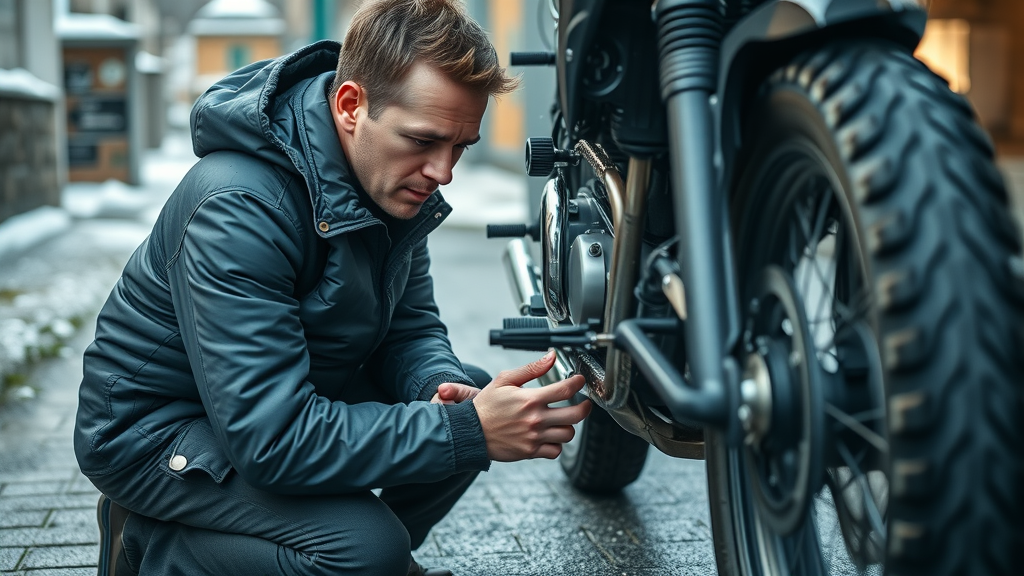


Write A Comment